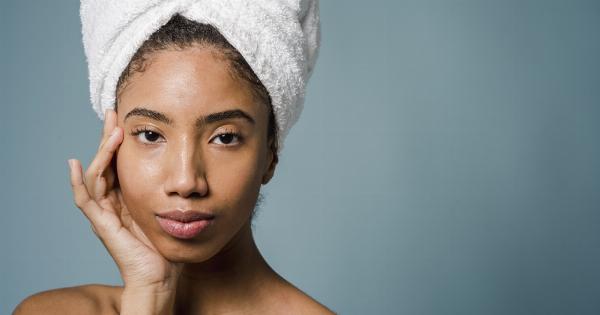Having oily hair can be frustrating and can have a significant impact on your overall appearance and self-confidence. However, there are several simple steps you can take to reduce the oiliness of your hair and keep it looking fresh and clean.
In this article, we will discuss some effective tips and techniques to help you maintain healthy, non-greasy hair.
1. Use the Right Shampoo and Conditioner
Choosing the right shampoo and conditioner for your hair type is crucial in controlling oiliness. Look for products specifically designed for oily hair or that are labeled as clarifying or volumizing.
These types of shampoos usually contain ingredients that help remove excess oil without drying out your scalp.
2. Wash Your Hair Regularly
Washing your hair regularly helps remove excess oil and dirt that can build up over time. However, be careful not to overwash your hair as it can strip away the natural oils, causing your scalp to produce even more oil to compensate.
Aim to wash your hair every other day or every two days and adjust as needed based on your hair’s texture and oil production.
3. Avoid Hot Water
While it may be tempting to enjoy a hot shower, it’s best to avoid hot water when washing your hair. Hot water can stimulate the production of oil, leading to greasy hair.
Instead, opt for lukewarm or cool water when rinsing your hair to help maintain its natural balance.
4. Don’t Overcondition
Conditioner is essential for keeping your hair hydrated and nourished, but overusing it can contribute to oily hair. Apply conditioner only to the ends of your hair, avoiding the roots and scalp where oil tends to accumulate.
Focus on using a small amount and rinse thoroughly to prevent any residue from being left behind.
5. Use Dry Shampoo
Dry shampoo is a fantastic tool for combating oily hair between washes. It helps absorb excess oil and refreshes your hair without the need for water.
Apply dry shampoo to the roots and massage it in, then brush or comb your hair to distribute the product evenly. It provides instant freshness and volume, making your hair look clean and oil-free.
6. Avoid Touching Your Hair
Touching your hair constantly throughout the day can transfer oils from your hands to your hair, making it look greasier. Try to resist the urge to run your fingers through your hair or play with it excessively.
If you have a habit of touching your hair, consider tying it up or using hair accessories to keep it out of your face.
7. Brush Your Hair Regularly
Brushing your hair regularly helps distribute the natural oils from your scalp down the strands, preventing them from accumulating at the roots. Use a boar bristle brush or a brush with widely spaced bristles to avoid overstimulating the oil glands.
Gently brush your hair from the roots to the ends to help distribute the oils evenly.
8. Adjust Your Diet
Your diet can also play a role in the oiliness of your hair. Avoid consuming excessive amounts of greasy or fried foods, as they can contribute to oil production.
Instead, focus on a balanced diet rich in fruits, vegetables, lean proteins, and whole grains. Drinking plenty of water can also help keep your hair and scalp hydrated.
9. Consider Your Styling Products
Sometimes, the styling products you use can contribute to oily hair. Avoid heavy products or those containing oils and silicones, as they can weigh down your hair and make it greasier.
Opt for lightweight, water-based hair products, and use them sparingly to avoid product buildup.
10. Maintain a Healthy Scalp
A healthy scalp is the foundation for healthy hair. Treat your scalp with care by avoiding harsh hair treatments or excessive heat styling. Keep your scalp clean and exfoliate occasionally to remove any buildup.
If you notice persistent oiliness or scalp issues, consult a dermatologist or a trichologist for proper diagnosis and treatment.


























